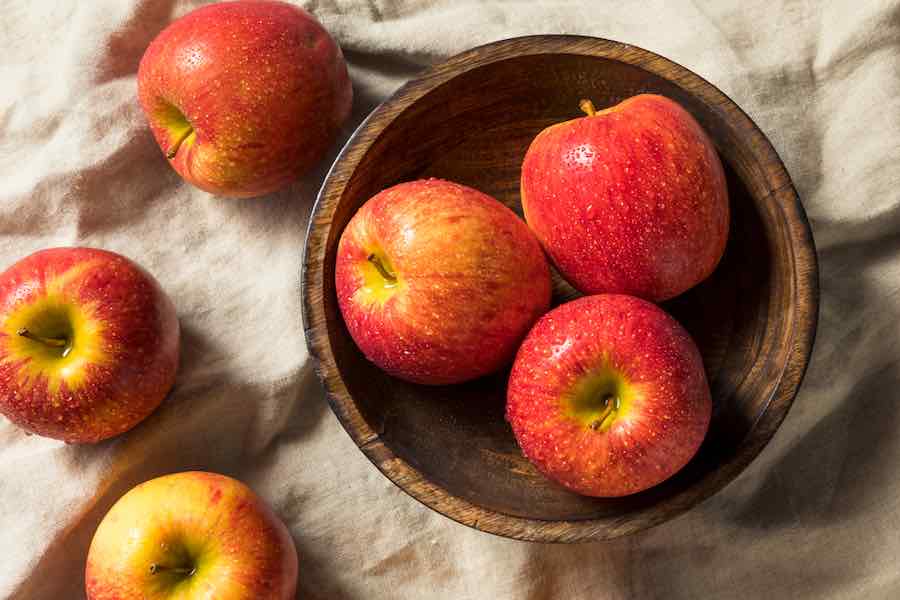Envy apples, known for their crisp texture and sweet-tart flavor, are grown in select regions around the world. These highly sought-after apples thrive in areas with a unique combination of climate and soil conditions. From the picturesque orchards of Washington State in the United States to the bountiful groves of New Zealand, Envy apples are meticulously cultivated to ensure their distinctive taste and exceptional quality. So, join us as we explore the global journey of Envy apples and discover the captivating locations where these delectable fruits are grown.
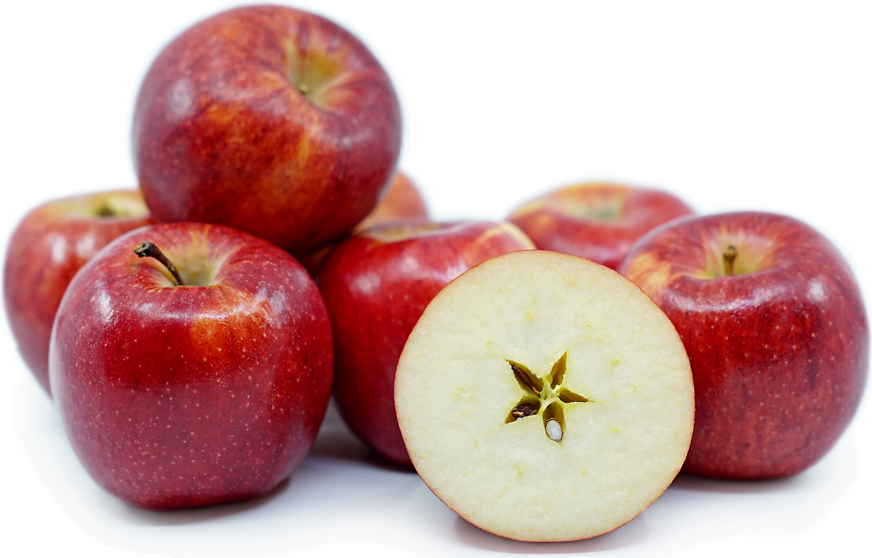
Introduction
Envy apples have gained significant popularity in recent years due to their unique flavor, crisp texture, and vibrant appearance. These apples, a cross between the Braeburn and Royal Gala varieties, have become a favorite among apple enthusiasts and health-conscious consumers. In this comprehensive article, we will explore the growth and popularity of Envy apples, the climatic conditions required for their cultivation, the specific regions known for Envy apple production, the impact of geographic location on their growth, best growing practices, challenges faced by growers, the global supply chain network, and future prospects for Envy apple production.
Growth and Popularity of Envy Apples
Envy Apples – A Brief Overview
Envy apples are a relatively new addition to the apple market, introduced commercially in 2009. They are known for their vibrant red color, large size, and exceptional taste. Envy apples boast a perfect balance of sweet and tart flavors, making them a favorite choice for snacking, baking, and cooking. Their crisp texture and excellent shelf life have contributed to their increasing popularity among consumers.
Health Benefits of Envy Apples
Envy apples not only satisfy taste buds but also offer an array of health benefits. They are a great source of dietary fiber, antioxidants, and essential vitamins and minerals. Regular consumption of Envy apples can help boost immunity, improve digestion, regulate blood sugar levels, and support heart health. These apples also contain polyphenols, which have been associated with reducing the risk of chronic diseases like cancer and heart disease.
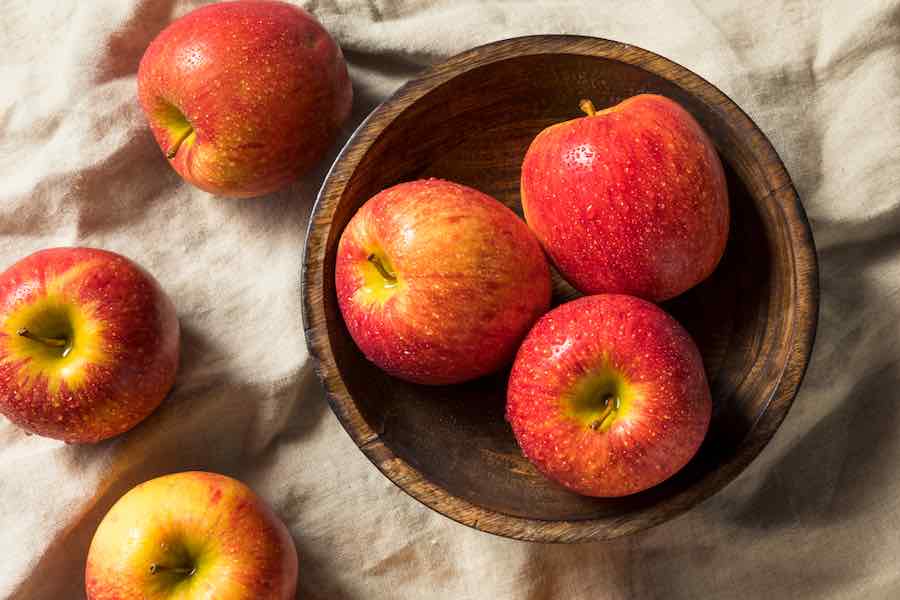
Climatic Conditions for Growing Envy Apples
Temperature Requirements
Envy apple trees thrive in moderate temperatures, typically between 60°F to 80°F (15°C to 27°C) during the growing season. Cold temperatures are essential for the formation of flower buds, while warm temperatures aid in fruit development. Extreme temperature fluctuations can negatively impact the tree’s growth, affecting fruit quality and yield.
Sunlight and Soil Requirements
To maximize their growth potential, Envy apple trees require abundant sunlight, ideally receiving at least six to eight hours of direct sunlight daily. Additionally, they thrive in well-drained soil with a pH level between 6.0 and 6.5. The soil should be rich in organic matter and provide good water drainage to prevent waterlogging, which can lead to root rot.
Rainfall and Humidity
Envy apple trees flourish in regions with moderate rainfall, typically requiring around 26-30 inches (660-760 mm) annually. Excessive rainfall or prolonged periods of high humidity may increase the risk of diseases and pests, affecting the overall health of the trees. Adequate air circulation is crucial to prevent the buildup of moisture and reduce the chance of fungal infections.
Envy Apple Growing Regions
Pacific Northwest Region
The Pacific Northwest region, mainly encompassing Washington state and parts of Oregon, is renowned for its optimal growing conditions for Envy apples. The region experiences cool, moist climates ideal for apple production. The volcanic soils and well-drained loamy soils in this area provide an excellent foundation for cultivating high-quality Envy apples.
Midwest Region
In the Midwest region, states like Michigan and Illinois have emerged as flourishing Envy apple growing regions. The climate in this area features cold winters and moderate summers, providing the necessary chill hours for apple tree dormancy. The rich, fertile soils of the Midwest contribute to the successful cultivation of Envy apples.
Northeast Region
New York and Pennsylvania stand out as prominent Envy apple growing regions in the Northeast. These states have a continental climate with cold winters and warm summers, offering the required temperature variations for healthy tree growth and fruit development. The well-drained soils common in this region contribute to the thriving apple orchards.
Southern Region
The Southern region, including states like Georgia, Tennessee, and North Carolina, poses some challenges for Envy apple cultivation due to its warmer climate. However, innovative techniques like high-density planting and advanced irrigation systems have allowed growers to overcome these challenges and successfully produce Envy apples. The southern region boasts early harvests, providing a unique advantage within the apple market.
Southwestern Region
California’s Central Valley is at the forefront of Envy apple production in the Southwestern region. The Mediterranean climate, characterized by mild, wet winters and hot, dry summers, creates favorable conditions for apple cultivation. The fertile soils and expertise in agricultural practices make the Southwestern region an important contributor to Envy apple production.
Southeastern Region
In the Southeastern region, the state of Georgia stands out as a key player in Envy apple production. The state’s mild winters and warm, humid summers create a challenging environment for growing apples. However, careful selection of apple varieties and implementing proper irrigation and pest management strategies have allowed growers in this region to overcome these obstacles and achieve successful Envy apple harvests.

Specific Countries Known for Envy Apple Production
United States
The United States, particularly Washington state, leads the world in Envy apple production. Other states like Michigan, New York, and Georgia also contribute significantly to the country’s Envy apple supply.
New Zealand
New Zealand has emerged as a major player in Envy apple production. The country’s temperate climate, fertile soils, and advanced cultivation techniques have led to the successful growth of Envy apples. New Zealand has become a top exporter of Envy apples, supplying international markets with high-quality produce.
Chile
Chile’s unique climate, with its long growing season and geographical diversity, has made it an important contributor to Envy apple production. The country’s mild Mediterranean climate in certain regions provides an ideal environment for cultivating Envy apples. Chile supplies Envy apples to both northern and southern hemisphere markets, enabling year-round availability.
Australia
Australia has seen a surge in Envy apple production in recent years. The country’s diverse climate zones, ranging from cool to Mediterranean, offer opportunities for growing Envy apples in different regions. The rich agricultural land and advanced farming practices have allowed Australia to establish itself as a reliable producer of Envy apples.
South Africa
South Africa’s favorable climatic conditions and extensive horticultural expertise have positioned the country as an important player in Envy apple production. The Western Cape region, in particular, benefits from its Mediterranean climate and nutrient-rich soils, creating ideal conditions for growing high-quality Envy apples. South Africa exports Envy apples to various global markets.
Impact of Geographic Location on Envy Apples
Tropical Climates
Envy apple cultivation in tropical climates presents challenges due to the lack of cold temperatures required for the apple trees to enter dormancy and initiate productive growth. The absence of chill hours may lead to poor fruit production and compromised quality. However, technological advancements, such as using controlled environment agriculture (CEA) systems, allow some growers in tropical regions to create artificial chill hours and successfully produce Envy apples.
Cold Climates
Cold climates with long, harsh winters pose a different set of challenges for Envy apple growers. Extreme cold temperatures can damage apple trees, leading to decreased yields and compromised fruit quality. Growers in cold regions implement various strategies like choosing cold-hardy varieties, providing protective covers or windbreaks, and employing proper pruning techniques to mitigate the risks associated with cold winters.
Moderate Climates
Envy apple trees thrive in moderate climates, which provide the necessary temperature variations for optimal growth and fruit development. Moderate climates typically offer the ideal balance between cold winters and warm summers, allowing the trees to enter dormancy and break bud at the appropriate times. These regions experience fewer challenges and achieve consistent Envy apple production.
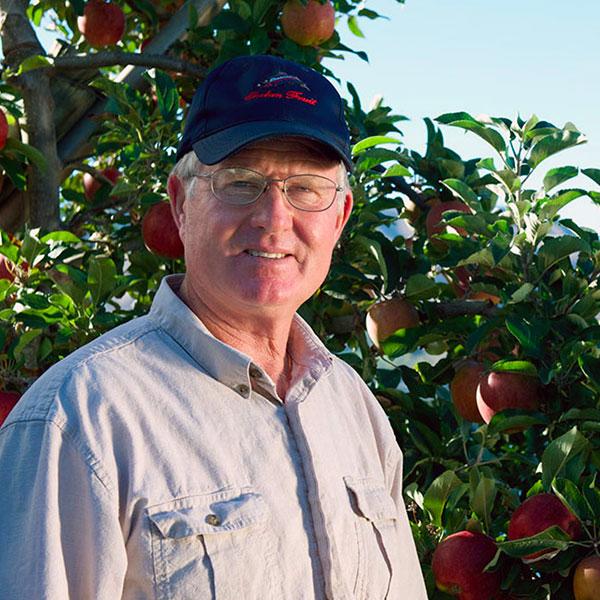
Best Growing Practices for Envy Apples
Choosing the Right Apple Variety
Selecting the appropriate apple variety is crucial for successful Envy apple production. Different varieties may have specific requirements regarding chilling hours, disease resistance, and market demand. Growers should consider factors like regional climate, soil conditions, and market preferences when choosing the best apple variety for their orchards.
Preparing the Soil
Proper soil preparation sets the foundation for healthy apple trees. Growers should conduct soil tests to determine the pH level and nutrient content of the soil. Based on the results, they can make necessary amendments to ensure optimal conditions for Envy apple growth. Clearing the land, removing weeds, and improving drainage are essential steps in soil preparation.
Planting and Training
Careful planting and training techniques contribute to the overall health and productivity of Envy apple trees. Trees should be planted at the appropriate spacing and depth, considering factors like air circulation and future growth. Training methods such as trellising or espaliering help optimize sunlight exposure, improve fruit quality, and facilitate efficient orchard management.
Fertilization and Watering
Envy apple trees require regular fertilization to ensure essential nutrient uptake. Conducting soil tests can help determine the specific nutrient needs of the orchard. Growers should follow recommended fertilization practices and consider organic alternatives to promote soil health and long-term sustainability. Adequate watering, particularly during dry spells, is crucial to prevent water stress and maintain the tree’s overall vigor.
Pruning and Thinning
Pruning and thinning are vital management practices that promote tree health and maximize fruit production. Pruning helps shape the tree, improves sunlight penetration, and enhances air circulation, reducing the risk of diseases. Thinning ensures that the remaining fruits have enough space to develop fully and enables larger, higher-quality harvests. Proper timing and techniques should be employed to achieve desired results.
Challenges Faced by Envy Apple Growers
Pest and Disease Management
Envy apple growers face various challenges related to pest and disease management. Common pests include apple maggots, codling moths, and aphids, which can damage fruit and reduce yields. Diseases like apple scab and powdery mildew can also impact crop quality and quantity. Integrated pest management (IPM) practices, including cultural, biological, and chemical control measures, help minimize the impact of pests and diseases.
Weather and Climate Challenges
Extreme weather events, such as late frosts, hailstorms, and droughts, can have a significant impact on Envy apple production. Late frosts may damage blossoms, resulting in reduced fruit set. Hailstorms can cause physical damage to the fruit, making it unsuitable for market. Drought conditions can lead to water stress and reduced tree vigor. Growers must monitor weather forecasts and employ protective measures to mitigate these challenges.
Competition and Market Demand
Envy apples face competition from other apple varieties in the market. Growers must stay up to date with consumer preferences and market trends to ensure their produce meets market demand. Differentiating Envy apples through branding, quality assurance programs, and partnerships with distributors and retailers can help growers maintain a competitive edge in the market.
Labor and Maintenance
Orchard management requires significant labor and ongoing maintenance. Pruning, fertilizing, pest control, and harvest activities demand physical labor and proper timing. Securing a reliable workforce and managing labor costs can be challenging for Envy apple growers. Utilizing machinery and automation where possible can help streamline operations and reduce labor-related challenges.
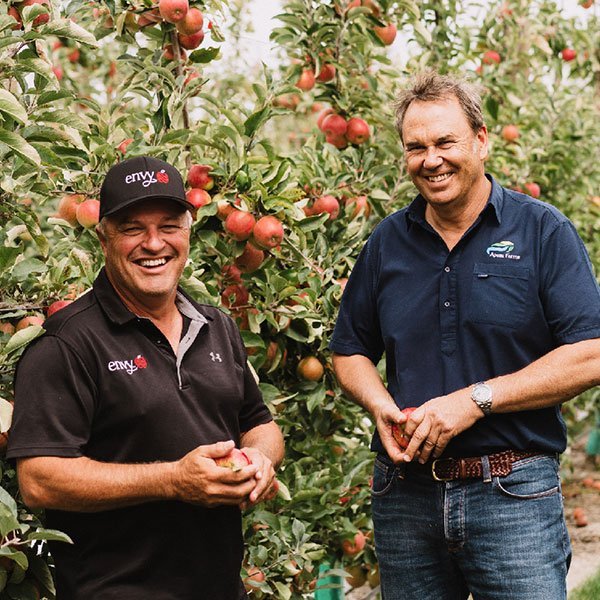
Global Supply Chain Network for Envy Apples
Harvesting and Sorting
Envy apples are typically harvested by hand, ensuring careful handling to minimize bruising and damage. Skilled workers sort the harvested apples based on quality, size, and appearance. Advanced sorting technologies, such as computer vision systems and automated sorting machines, enhance efficiency and accuracy in the sorting process.
Storage and Transportation
After sorting, Envy apples are stored in controlled atmosphere storage facilities to prolong their shelf life and maintain quality. These facilities regulate temperature, humidity, and oxygen levels to minimize spoilage and keep the apples fresh. Once ready for transportation, Envy apples are carefully packed in crates or bins and transported using refrigerated trucks or shipping containers to preserve their freshness during transit.
Distribution and Market Reach
Envy apples have a global market reach, with distribution channels spanning local markets, national retailers, and international export markets. Distributors play a crucial role in ensuring the timely delivery of Envy apples to consumers while maintaining strict quality control measures. Envy apples are widely available in supermarkets, farmers markets, and online platforms, catering to the rising demand for premium quality produce.
Future Prospects for Envy Apple Production
Technological Advancements
Advancements in technology are expected to play a significant role in the future of Envy apple production. From improved cultivation practices to automated orchard management systems, technology offers opportunities for increased efficiency, reduced environmental impact, and enhanced profitability. Precision agriculture techniques, such as remote sensing, drone technology, and data analytics, may further optimize resource management and crop monitoring in Envy apple orchards.
Expanding Market Potential
Envy apples have witnessed impressive market growth, and the demand for this variety is expected to continue rising. As consumers increasingly prioritize flavor, texture, and health benefits, Envy apples align with these preferences, positioning them for sustained popularity. Expanding marketing efforts, consumer education, and targeted promotional campaigns can further increase market potential for Envy apple growers.
Sustainability Measures
Sustainability is becoming a crucial focus in the agricultural industry. Envy apple growers are adopting sustainable practices to minimize environmental impact and improve long-term viability. These practices include reducing chemical inputs through integrated pest management, implementing water conservation strategies, adopting organic farming practices, and exploring renewable energy solutions. By prioritizing sustainability, Envy apple production can continue to thrive while safeguarding the environment.
In conclusion, the growth and popularity of Envy apples have skyrocketed in recent years due to their exceptional flavor, health benefits, and vibrant appearance. The specific climatic conditions required for Envy apple cultivation vary depending on factors like temperature, sunlight, soil, and rainfall. Different regions worldwide, including the United States, New Zealand, Chile, Australia, and South Africa, have emerged as key players in Envy apple production. Geographic location greatly influences Envy apple cultivation, with tropical, cold, and moderate climates presenting unique challenges and opportunities. Implementing best growing practices, overcoming challenges related to pest and disease management, establishing a global supply chain network, and focusing on future technological advancements and sustainability measures will contribute to the continued success and growth of Envy apple production.
